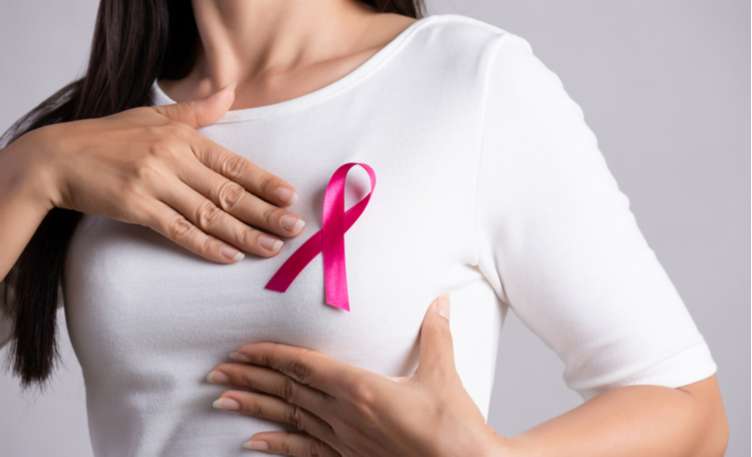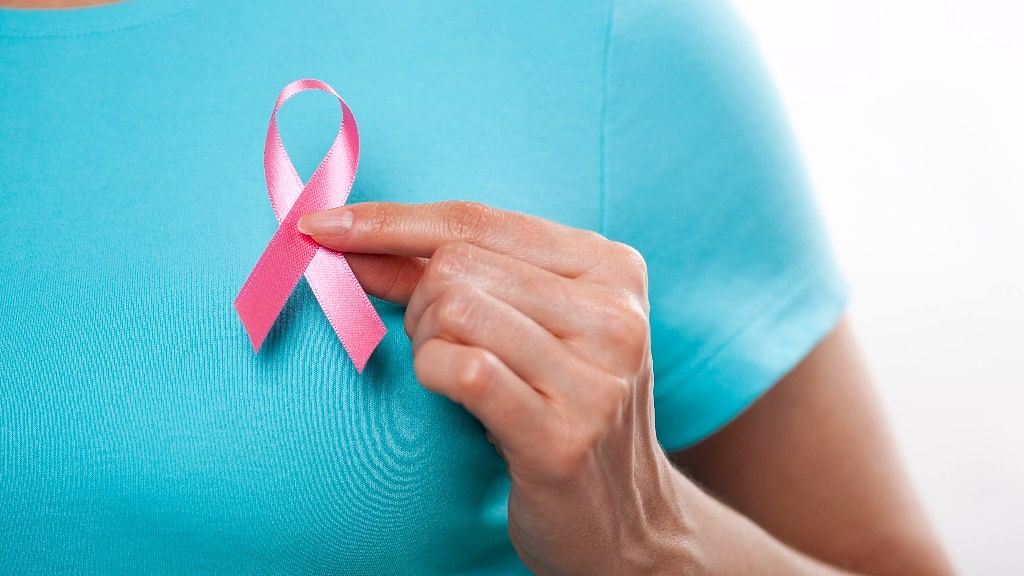Screening of Breast Cancer Guidelin
Screening of Breast Cancer Guidelines. Screening for breast cancer is important for the early detection of breast cancer. In this article, we will discuss the guidelines for screening for breast cancer. The American College of Obstetrics and Gynecology recommends that women between 50 and 74 undergo mammograms every two years. This is a good starting point if you haven’t had a mammogram within the past two years. As you age, your risk of developing breast cancer increases. So, it would help to consider having a yearly mammogram after age 40. This is a good starting point if you haven’t had a mammogram in the past year.
It’s also a good idea to have regular self-exams. This includes the breasts, axillary, and groin areas. You should also perform monthly self-exams to check for lumps or other abnormalities.
Breast cancer screening is performed to detect the disease early to treat it effectively. In this process, a medical professional examines the patient’s breast and other body parts for abnormal growth.
Screening aims to find cancers at their early stage so that treatment can begin. Many screening tests are available today, and the choice of the test depends on the risk factor involved and other personal characteristics.
The most common screening test used is mammography. This test can detect the early stages of cancer by taking pictures of the breast tissue. Other screening tests include ultrasound, magnetic resonance imaging (MRI), computerized tomography (CT) scans, and self-exams.
Is there a difference between breast self-exams (BSEs) and mammograms? Are they the same thing? And what are the guidelines for screening women for breast cancer? These are just some of the questions you should ask yourself before you decide which screening method is right for you.
For those unfamiliar with breast cancer, it’s the most common cancer among women.
While most people don’t think about breast cancer until it happens, knowing the warning signs and prevention methods is important.
If you’re reading this post, chances are you’re already considering getting a BSE. If you’re unsure which screening method is right for you, keep reading.
We’ll give you all the information about breast cancer, including the different types of screenings, the differences between BSE and mammograms, and more.

What is breast cancer screening?
This question has been asked many times over the years. While some may argue that it is best to wait until symptoms present themselves to seek medical help, others believe women should be screened early.
The most important thing to consider when choosing a method is the age at which you should begin screenings. Women over 50 should start annual mammograms, while younger women should start every three years.
This depends on the age of your mother, father, sister, and other female relatives and the period at which you began menstruating.
As a young woman, I’d recommend beginning screenings when you experience menstrual changes.
However, you can opt for more frequent screenings if you’re concerned about your family history.
We owe a debt of gratitude to the women who came before us. They paved the way for us to live longer, healthier lives; this is one of the greatest things about being a woman.
But, sadly, we have a long way to go. Women still die from breast cancer at the same rate they did fifty years ago. This is a huge problem and one that needs to be addressed.
Screening Mammography
In the United States, breast cancer screening is recommended for women between the ages of 40 and 75 and is considered a preventative measure.
Breast cancer is the second most common cancer among women and one of the most deadly. This is why it’s important to get regular screenings.
Regular mammograms, ultrasounds, and exams are the only way to know if you’re at risk. This should be a high priority if you have a family history of breast cancer.
I will be honest; this is one of my least favorite topics. There are lots of different opinions on whether you should be getting mammograms or not. The fact is, they are not perfect tests, and they can be misleading.
However, I’d like to offer my two cents, and I’d like to do it by telling you what I believe. In my opinion, if you are a woman over the age of 40, I recommend getting mammograms every year. I also recommend them for women under 40 who have certain risk factors.

Breast Self-Examination
I’ll be honest with you; I think better alternatives are available. However, I believe this platform offers unique opportunities to earn income and is a decent starting point for some beginners.
It all comes down to what your ideal customers will get real value from. For example, if your audience wants to learn to make money online or lose weight, some products can help.
But as I mentioned earlier, there are also a lot of poorly conceived and maintained products on the marketplace. That’s why I highly recommend doing your diligence before signing up to promote anything.
Breast self-examination is a great way to ensure you’re healthy and detect breast cancer early. While it’s a good practice to get into, there are a few things to consider first.
First, you can do a breast self-exam at home without equipment. You can also find instructions on performing a breast self-exam in this site’s “Self Care” section.
Second, it’s important to note that while regular breast exams are a good idea, there is a large difference between annual mammograms and regular breast self-exams.
The former is recommended yearly, whereas the latter should be done more frequently than once a month.
How to get a mammogram
As a woman, you should be aware of your own body. But did you know that you can prevent breast cancer by performing a monthly self-exam?
Breast self-examination can be performed in many different ways. Some techniques involve examining both breasts simultaneously while standing up, and others involve only looking at one side of the body at a time while lying down.
In this article, I will teach you a technique that involves only looking at one side of the body while lying down.
I want to start by saying that I believe in this technique 100% and encourage you to try it yourself. It’s a simple way to get started with breast self-examination.
This technique examines each breast for changes that might indicate something more serious. You should also check under your armpits and between your breasts to ensure no lumps.
If you’re female, chances are, you’ve had a breast self-exam. And if you haven’t, it’s something you should start doing. But just because it’s a routine doesn’t mean it should be done monthly.
The reality is that mammography isn’t 100% reliable, so it’s important to keep up with regular exams. The American Cancer Society recommends that women perform BSE every month between the ages of 25 to 74.
The most important thing to know about BSE is that it doesn’t replace other screening forms, like mammography. It’s meant to supplement mammograms. So, if you’re already getting your annual mammogram, you don’t have to add the BSE to your routine.

Frequently Asked Questions (FAQs)
Q: What are the guidelines for women who have had mammograms in the past two years?
A: The guidelines for women who have had a mammogram in the past two years are that they should come back in a year and that there is no need to have a mammogram for women who have not had one in the past two years.
Q: Why did the guidelines change?
A: It changed because it was thought that breast cancer screening was being done too early.
Q: Does this mean women in their 50s should not get mammograms?
A: Women in their 50s may get mammograms if they have regular checkups and don’t have a family history of breast cancer.
Q: Do you think the new guidelines are too conservative?
A: Yes, I think that they should change them. For example, a woman with breast cancer should not worry about being overweight. She should eat healthy foods and exercise.
Q: How can this guideline change be made?
A: There should be more screening for women with certain risk factors, such as obesity or diabetes.
Q: Why do you think many women do not follow these guidelines?
A: Women are still afraid of their doctors telling them they have breast cancer. If they don’t know it, they can live a normal life, which is what they want.
Q: How often should women have mammograms?
A: According to the guidelines released by the American Cancer Society, women between the ages of 40 and 74 need a mammogram yearly.
Q: Why are some guidelines more strict than others?
A: According to the guidelines, high-risk women should have a mammogram annually or more frequently if needed. Women with previous breast cancer or surgery should also have a mammogram more regularly than every year.
Q: Should I follow my doctor’s advice about getting a mammogram?
A: The guidelines say a woman should always discuss her risks with her doctor. If your life expectancy is less than ten years, you should talk with your doctor about getting a mammogram more often.
Myths About Breast Cancer
Mammography screening for breast cancer will result in a loss of lives by false positive results and overdiagnosis of breast cancer.
Mammography is not a good screening test because of its low sensitivity.
Mammography is not recommended for women between 50-70 years.
The only way to prevent breast cancer is by doing monthly self-examinations and mammograms yearly.
The incidence of breast cancer is high in women with a family history of breast cancer.
Women over 40 years old should not be screened for breast cancer.
Conclusion
As the title says, this is a very important subject. We must all understand how our body works and what we can do to prevent breast cancer in the future.
We all must pay attention to the advice given to us by medical professionals. There is no point in going through all the trouble if we ignore the signs of breast cancer.
There is a lot of information on the internet about breast cancer, but I suggest you follow your doctor’s advice and not get too caught up in the hype.
Screening for breast cancer is recommended for all women over 40. This is because they are more likely to develop breast cancer than younger women.
This is because young women have dense breasts, making it more difficult to detect breast cancer early.
Screening can detect breast cancer before it has spread to other parts of the body. Early detection is important because breast cancer can be treated successfully.
While many women will probably not change their lifestyle habits to change their risk of developing breast cancer, it’s important to understand the reasons why these guidelines were released.
The most important reason is that the current guidelines are outdated. They were based on data collected from the 1980s.
The current guidelines will continue to be used for the next decade. But we must remember that we are moving into a new era.
The data collected in the 1980s was from a population of women with a much lower risk of developing breast cancer than women do now.
Since then, medical advances have allowed us to detect and treat breast cancers. So, we need to update our guidelines to reflect the new data.

















